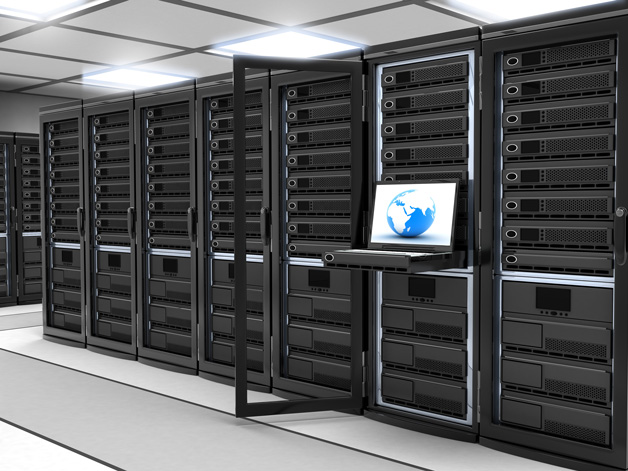The Raritan Blog
Home » Raritan Blog » ASHRAE’s New Energy Standard for Data Centers
ASHRAE’s New Energy Standard for Data Centers
Rick Gonedes
May 23, 2017

As we become more firmly entrenched in the digital revolution with each passing day, energy efficiency and general energy standards in mission-critical facilities like data centers are becoming more important all the time. Not only do factors like proper thermal design and installation practices prevent the possibility of issues like overheating or a loss of functionality, but they also allow for the facilities themselves to operate in a much more reliable and cost-effective way.
Recently, the American Society of Heating, Refrigerating and Air-Conditioning Engineers (ASHRAE) has published a final version of its new data center energy efficiency standard, dubbed ASHRAE 90.4. At its core, it was designed to help facilities meet the challenges of not only a booming digital economy but also issues like rising energy and natural resource consumption.
What is ASHRAE 90.4?
Perhaps the most significant change to ASHRAE 90.4 is that the standard no longer uses Power Usage Effectiveness (also commonly referred to as PUE) as a metric for measuring data center efficiency. In years past, the efficiency of a facility was based on operational efficiency - meaning how well it was using the energy it needs to run, regardless of other factors.
Instead, the standard now focuses on two new metrics - Mechanical Load Component (also referred to as MLC) and Electrical Loss Component (also referred to as ELC) - in an effort to give facility managers a better level of insight into design efficiency. The major change is instead of looking at how efficiently a data center is using the energy it needs, the new standard shifts the burden towards making sure a data center doesn't need so much energy in the first place.
This subtle but important shift can have a positive impact in terms of operating expense reduction, increasing sustainability, the capital investment required to retrofit or build a new data center and more. These new metrics are much more reflective of real-world data center environments as they exist today, as opposed to the former PUE metric which was first designed and implemented in 2006 and 2007. ASHRAE 90.4 is just a much more realistic way of looking at data centers as they exist in 2017.
It is also important to note that ASHRAE standards aren't legally binding and the organization itself doesn't even enforce compliance in any type of serious way. They are simply meant to be a roadmap that facility managers can use to focus on the metrics that matter the most, allowing them to meet the needs of their existing clients and make the upgrades necessary to provide a more reliable level of service at the same time. As with all ASHRAE standards, 90.4 is considered to be a "work in progress" - ASHRAE plans on regularly re-evaluating the standard as new technology and data becomes available. Any upcoming changes will be published via the ASHRAE addenda process.
Why This New Standard Matters
Many people might not realize that data centers are actually the fastest growing users of energy worldwide - which, when you consider the important role that these facilities are playing in nearly every industry, makes a large degree of sense. According to one study conducted by the Natural Resources Council, data centers are on pace to consume roughly 140 billion kilowatt-hours of electricity each year by as soon as 2020. This will certainly lead to additional stress on a power grid that has already been pushed to its limits.
However, the rise of data centers themselves cannot and should not be slowed - doing so would not only stifle innovation in many sectors but would also make it difficult for businesses to take advantage of competitive opportunities in their marketplaces. It is the issue of energy consumption that needs to be addressed, which is a large part of what ASHRAE 90.4 was intended to do in the first place.
With Raritan’s innovative technology in power and infrastructure management, our products are aimed to provide solutions to this ever-evolving problem. To learn more about our advanced intelligent PDUs visit us at - http://www.raritan.com/products/power-distribution/intelligent-rack-pdus.
Other Blog Posts
- Who Should Care About ISO 27001?
- Posted on April 30, 2024
- The Rapid Growth of AI and the Use of Raritan PDUs to Meet Higher Power Demands
- Posted on October 11, 2023
- Data Center Report Fewer Outages, But Downtime Still Costly
- Posted on September 20, 2023
- Survey: Energy Usage and Staffing Shortages Challenge Data Centers
- Posted on September 20, 2023
- Raritan Secure Switch: Secure NIAP 4.0 Compliant Desktop KVM
- Posted on September 20, 2023
Subscribe
Upcoming Events
- Advancing Data Center Construction West 2024
- May 6 – 8 • Salt Lake City, UT
- Net Zero Data Center
- May 16 – 17 • Dallas, TX
- 7x24 Exchange Spring
- June 9th • JW Marriott Orlando Grande Lakes
Latest Raritan News
- Legrand Certifications and Process Controls Provide Confidence in Information Security for Network-Connected Devices in Data-Related Applications
- Posted on April 1, 2024
- Legrand Releases Version 4.0 of Raritan’s Industry-Leading Secure KVM Switches, Raising Bar for Secure Desktop Access
- Posted on July 31, 2023
- Legrand Revitalizes Data Center Sector with Two Revolutionary Intelligent Rack PDUs
- Posted on May 1, 2023
- Raritan Reveals The MasterConsole® Digital Dual KVM Switch
- Posted on February 18, 2021
- Legrand Data, Power and Control Division Announced as Finalist in Six Categories at DCS Awards 2020
- Posted on November 9, 2020